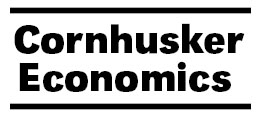Agricultural Economics, Department of

Cornhusker Economics
Date of this Version
5-3-2023
Document Type
Newsletter Issue
Citation
Cornhusker Economics (May 3, 2023)
Agricultural Economics, University of Nebraska-Lincoln
Abstract
Commodity marketing operates in a complex decision environment with constant information flow, which can conceal long-run financially profitable marketing opportunities for producers. In the corn marketing space, the competitive role of ethanol plants throughout the state may provide producers with long-run financial gains by strategically approaching marketing decisions. In this article, we characterize whether producers can gain financially from strategically marketing corn to ethanol plants. For example, do ethanol plants provide a better long-run return from pre-harvest hedging, spring sale, or harvest sale?
We investigate three important contracting times--forward contract for harvest delivery (called pre-harvest hereafter), harvest delivery, and spring sale--from ethanol plants that differ in capacity. This difference in capacity, in turn, impacts the size of the grain bid.
Our results focus on observed corn prices. There are more elements to consider when selling crops, such as patronage (if any), unloading wait times, corn discount schedules (for example, test weight, moisture), and opportunity cost of time. As we focus on price, our results provide a useful starting point to take these other important conditions into account.
Included in
Agribusiness Commons, Agricultural and Resource Economics Commons, Agricultural Economics Commons, Bioresource and Agricultural Engineering Commons, Marketing Commons, Oil, Gas, and Energy Commons

